Copies of earlier versions of pages
Films with NDE or similar content:
1. Hereafter
The International Association for Near-Death Studies (IANDS) is the first organization in the world devoted exclusively to the study of Near-Death Experiences (NDEs) and Near-Death-Like experiences. Founded in 1978, it has become the premier NDE resource for research, education and support.
Based on scientific and scholarly research roots, IANDS is the most trusted source for researchers, experiencers, professional care providers, clergy and seekers of greater meaning.
IANDS supports and encourages research in the field of near-death studies by:
If you are writing a paper on the near-death experience, we have resources here.
Researchers are looking for volunteers to participate in the following new studies
Included here are articles about research that is of special interest in the field of near-death studies.
As an educational nonprofit organization, IANDS focuses most of its resources into providing the highest quality educational information available for NDE-related subjects.
Our North American conferences provide current and topical information about NDEs in an informal setting. Near-death experiencers, educators, caregivers and the general public find programs and activities of interest in these events.
IANDS NDE Radio host Lee Witting presents weekly live broadcasts every Monday at 11:00 AM Eastern time on TalkZone.
More details coming soon.
Professional educational Credits are available from our new CEU program.
IANDS provides the following educational resources to learn more about NDEs:
IANDS provides the following educational resources to learn more about NDEs:
Professional Educational Credits are available from our new CEU program.
As an educational nonprofit 501(c)(3) organization, the International Association for Near-Death Studies (IANDS) focuses most of its resources into providing the highest quality information available about NDE-related subjects. It is the only such membership group in the world.
In addition to maintaining this information-rich website, IANDS publishes a peer-reviewed scholarly journal and a member magazine, sponsors conferences and other programs, works with the media, and encourages the formation of regional discussion and support groups.
We invite you to join today to become a part of this mission and keep up to date on what is known about this fascinating subject.
IANDS’ purpose is to promote responsible, multi-disciplinary exploration of near-death and similar experiences, their effects on people’s lives, and their implications for beliefs about life, death, and human purpose. Where scholarship does not indicate a reasonably clear position on the origin or interpretation of these experiences, we remain impartial and open to the presentation of varying points of view; however, while all personal beliefs will be respected, IANDS is under no obligation to consider them all equally supportable. Whatever the viewpoint, IANDS never supports proselytizing.
Research fund
Web development
Combat study
Angel fund
Dorothy Johnston Library
 Help Light the Way!
Help Light the Way!Envisioning a future in which near-death and related experiences have become part of the common wisdom, enriching the human search for meaning and inspiring a better world.
Wherever in the world knowledge from NDE research reaches, and wherever compassionate people educated by that information are able to offer understanding and support to their community - that is IANDS in action.
For over thirty years, IANDS has been educating the world about near-death and similar experiences, offering reliable information, education,and supportive understanding to the public and to experiencers and their families. It has helped change the public perception of what it is like to die; it has deepened our understanding of how best to live.
Now we ask you to help us move the IANDS mission forward!
This is the beginning of a new era for IANDS, crowded with plans and ongoing ventures.
We need you to help keep the IANDS mission moving forward!
Light the Way is a recurring donation program to support existing programs and defray the expenses associated with new outreach initiatives. Your gift will enable us to share new levels of understanding while reaching out to thousands of new people. We have the energy, the plans, and the passion. What we need are the funds to make it possible. Please give generously to help make this happen!
To make an on-going monthly pledge, please use the link below to print out a donation form and mail or fax it to the address on the form.
 Light The Way On-going Pledge Form
Light The Way On-going Pledge Form
Or you can call the IANDS office in the United States during business hours (Monday-Friday, 9:00 a.m. - 5:00 p.m. Eastern time). Click here for address and phone number.
To make a convenient, one-time online donation to IANDS, click on this link to help us Light the Way!
Your IANDS membership to help us build global understanding of near-death and near-death-like experiences through research, education and support. Our vision is to unlock the mysteries of the NDE --what it reveals about the nature of human consciousness and the ultimate meaning of life--in order to increase tolerance and love for one another, to build bridges between religions and cultures, and to create a world of greater harmony and peace.
We need the support of members like you to accomplish these goals. All of our work is done by volunteers, with the help of a small office support staff.Click on the list on the left for the conference(s) you are interested in. Also check out the conference videos that are available on YouTube:
Our annual North American conferences provide current and topical information about NDEs in an informal setting. Near-Death Experiencers, Educators, Care Givers and the general public all find programs and activities of interest in these events.
The term “near-death experience” (NDE) was coined in 1975 in the book Life After Life by Raymond Moody, MD. Since then, many researchers have studied the circumstances, content, and aftereffects of NDEs. The following material summarizes many of their findings.
The “classic” pleasurable NDE includes four phases that tend to happen in a certain order. However, each NDE is unique. It can include any combination of phases, and the phases can occur in any order. The phases can even overlap, seeming to occur at the same time. Any two people describing the same general phase will describe differences between their two experiences.
The phase that often occurs first can be termed disassociated, because pleasurable NDErs no longer feel associated with their physical bodies or with any particular perspective. They feel detached and completely peaceful, without seeing, hearing, or feeling anything in particular. They sometimes describe a floating sense of freedom from pain and of complete wellbeing.
In the naturalistic phase, NDErs say they became aware of the “natural” surroundings—typically their bodies and the surrounding area—from a perspective outside their bodies. They usually say things looked and sounded like normal but unusually clear and vivid. They also often say they had unusual abilities, such as being able to see walls and also see through them, and being able to “hear” the unspoken thoughts of the people nearby.
In the supernatural phase, the pleasurable NDEr meets beings and environments that they do not consider to be part of the “natural” world. They may meet deceased loved ones or other non-physical entities. They say communication with these beings is “mind to mind” rather than spoken. They say they went to extremely beautiful environments in which objects appeared lit from within. They sometimes say they heard beautiful music unlike any worldly music they’d ever heard. They often say they moved rapidly through a tunnel or void toward a light, and then entered the light, only to discover that the light was actually a being. They say they felt completely known and completely loved by this being. They sometime say they experienced a “life review”: All at the same time, they re-viewed, reexperienced, and experienced being on the receiving end of, all their actions throughout life. Some pleasurable NDErs say they went beyond the light, seeing cities of light and knowledge.
The final phase of the pleasurable NDE is a return to the physical body. About half of pleasurable NDErs say they chose whether or not to return. When they chose to return, it was because of a love connection with one or more living people. The other half say they didn’t choose to return: They either were told or made to return, or they were just suddenly “back” in their bodies.
People describe distressing NDEs much less often than pleasurable NDEs. The following four types of distressing NDE appear in order from most to least often reported. Distressing NDErs most often describe the powerlessness type as having the same phases as a pleasurable NDE, but they say they felt powerless while this experience was “happening to” them, so they resisted, were afraid, or were angry. In the nothingness type, they say they felt as though they did not exist, or they were completely alone in a total and eternal void. In the torment type, they say they were in ugly or scary landscapes, sometimes with evil beings, annoying noises, frightening creatures, and/or other human spirits in great distress. Only a couple of people have described the worthlessness type in which they felt negatively judged by a Higher Power during a life review.
Some distressing NDErs said that once they “gave up” fighting the distressing NDE and surrendered to it, or once they sincerely asked for help from a loving Higher Power, their distressing NDE became a pleasurable NDE. Only very, very rarely have NDErs said their pleasurable experiences turned into distressing ones.
In a scientific age, it is only natural that people want to understand the biological or psychological origins of experience, and a variety of neurological and chemical explanations have been proposed as the cause of NDEs: lack of oxygen, excess of carbon dioxide, seizure activity in the temporal lobe, the effect of drugs such as DMT or ketamine, hallucination, psychological avoidance of death, normal shutting down of brain activity, and a dozen or more other possibilities.
No scientific explanation so far has satisfactorily accounted for all aspects of NDEs or their effects. For example, numerous patients who were being clinically monitored and were known to be well oxygenated have later reported having an NDE during that time; drugs are not a factor in all NDEs; the characteristics of sleep disorders and NDEs are not identical. Hallucinations are highly individual and produce confusion and hazy memories, exactly the opposite characteristics of NDEs, which tend to share characteristics and be remembered vividly for decades as being "realer than real." For every medical cause that has been put forward, there are reasons the NDE researchers say, “Not quite right.”
Further, despite reports that scientists have been able to induce NDEs through the use of drugs or electrical stimulation to the brain, none of the reports has been altogether convincing. The reports have been based on a partial similarity to a limited aspect of NDE, or they have involved very few people—sometimes only a single individual—in an experiment that does not really replicate a full NDE, or the aftereffects do not coincide with those of a true NDE. After decades of investigation, researcher and psychiatrist Bruce Greyson, MD, has reported, “No one physiological or psychological model by itself explains all the common features of NDE.”*
Thousands of documented NDEs challenge mainstream Western thinking and belief systems. Expectations about an afterlife may be challenged, and some people abruptly develop radically new interests and abilities after an NDE. One subject of debate is whether consciousness (mind) resides exclusively in the physical brain. For example, many people who have had an NDE accurately report events that occurred around their bodies when they were unconscious or even clinically dead—in at least one case, when clinical monitoring clearly showed no brain activity. Some NDEs have revealed family secrets, such as the existence of a never-mentioned sibling. According to the prevailing belief system of industrialized societies, these things are scientifically impossible. Readers interested in such cases can find them compiled in the book The Self Does Not Die: Verified Paranormal Phenomena Associated With Near-Death Experiences.
- - - - - -
*Greyson, B. (2001). Posttraumatic stress symptoms following near-death experiences. American Journal of Orthopsychiatry, 71, 368–373.
More NDE information is available through the following links:
If you are interested in NDE research, be sure to check our Research Section.
If you have had an NDE, you may submit your experience to our Archives.
Pages related to members only functions
NDE Archives
Below are links to some of the hundreds of near-death experience accounts that have been submitted by internet to the IANDS archives since 2002. They are divided into four sections:
If you have had a near-death experience we encourage you to submit your experience to the archives by clicking on this link. Submit your NDE account
These NDE accounts were submitted to our website and are published here anonymously. Minor edits have been made to protect the identity of the experiencer and others who may have been involved with the experience. Note to researchers and authors: IANDS cannot grant permission to publish quotations from these NDE accounts because we have not received permission from the NDE authors to do so. However, we advise authors who wish to use quotations from these accounts to follow the Fair Use Doctrine. See our Copyright Policy for more information. We recommend adopting this practice for quotations from our web site before you have written your book or article.
These near-death-like experience accounts were submitted to our website and are published here anonymously. Minor edits have been made to protect the identity of the experiencer and others who may have been involved with the experience. Note to researchers and authors: IANDS cannot grant permission to publish quotations from these NDE accounts because we have not received permission from the NDE authors to do so. However, we advise authors who wish to use quotations from these accounts to follow the Fair Use Doctrine. See our Copyright Policy for more information. We recommend adopting this practice for quotations from our web site before you have written your book or article.
In this area, you can find NDE accounts told by someone other than the experiencer. Like the other accounts, these have been lightly edited to remove direct references to actual names and places. Note to researchers and authors: IANDS cannot grant permission to publish quotations from these NDE accounts because we have not received permission from the NDE authors to do so. However, we advise authors who wish to use quotations from these accounts to follow the Fair Use Doctrine. See our Copyright Policy for more information. We recommend adopting this practice for quotations from our web site before you have written your book or article.
Welcome to the new NDE video and audio section, featuring individuals describing their near-death experience. Some of these NDE accounts were recorded at various IANDS sponsored events; others are from the news media. A few derive from other sources.
All of these links are to video or audio files that are in the public domain on the Internet. Most reside on youtube.com, the largest repository of non-commercial video on the internet, and we link to them. (With each segment, youtube.com will post thumbnail links to other videos. The quality of those — and sometimes the content — will vary. We are unable to screen their links, as they frequently change.) A high-speed Internet connection is highly recommended to view these NDE accounts.
These are samples of previously published Monthly NDEs which are sent monthly via email to members. Join IANDS as a member to receive the Monthly NDE emails.
IANDS Affiliated Groups serve near-death experiencers by providing understanding and information to those who have had such experiences. Groups also offer education and discussion of near-death and related experiences to the general public in a supportive, accessible setting. Located in various cities in the U.S. and a number of other countries, the IANDS Groups hold regular meetings for NDErs and the general public.
IANDS Groups allow freedom of interpretation of NDEs and similar experiences and do not proselytize any single point of view. They provide support to NDErs, not therapy. While fostering the free exchange of ideas through open discussion, the Group safeguards the stability of its participants by refraining from demonstrating or teaching techniques which are known to be emotionally hazardous for some individuals.
IANDS Group representatives or individuals interested in organizing an IANDS group in their location may find the following information useful:
1. IANDS Group Affiliation Policy and How to Register an IANDS Group
( definition and requirements to register as an IANDS Affiliated Group )
2. Tips on starting a new IANDS group.
3. Resources for IANDS Groups (access authorization required):
a. IANDS Group Leaders Website
c. IANDS Speakers Bureau
Vital Signs, IANDS' quarterly magazine, contains NDE accounts, commentary, and perspectives on near-death experiences, as well as news and articles of general interest.
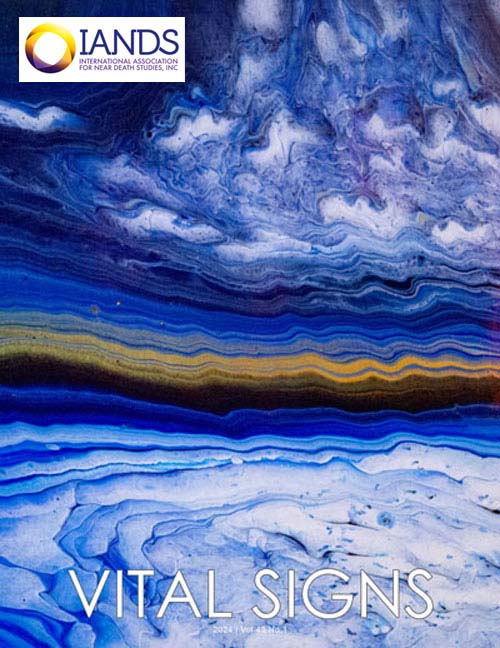 2024 Spring 2024 Spring Issue 43-1 (PDF) |
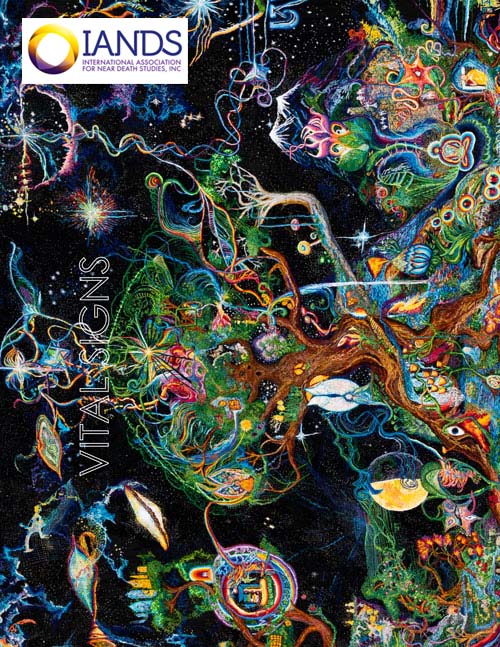 2024 Summer 2024 SummerIssue 43-2 (PDF) |
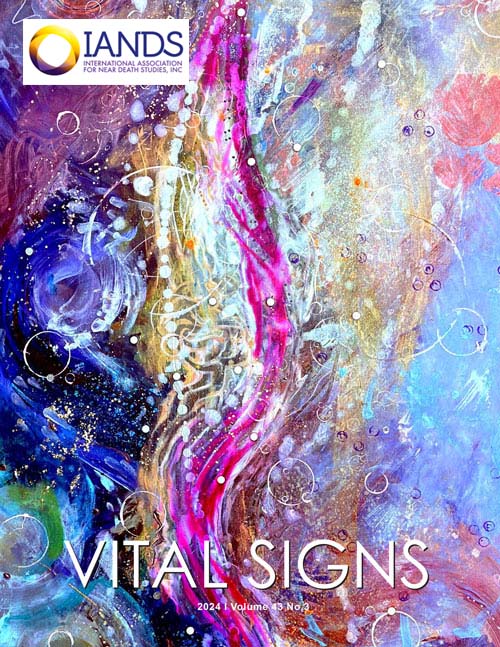 2024 Fall 2024 FallIssue 43-3 (PDF) |
 2024 Winter 2024 WinterIssue 43-4 (Upcoming) |
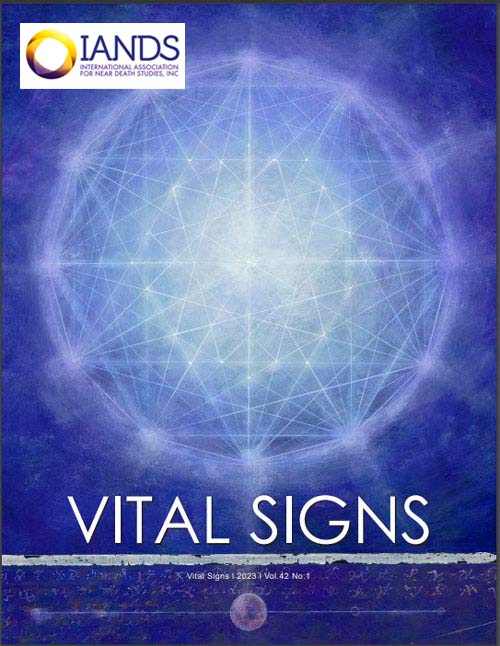 2023 Spring 2023 Spring Issue 42-1 (PDF) |
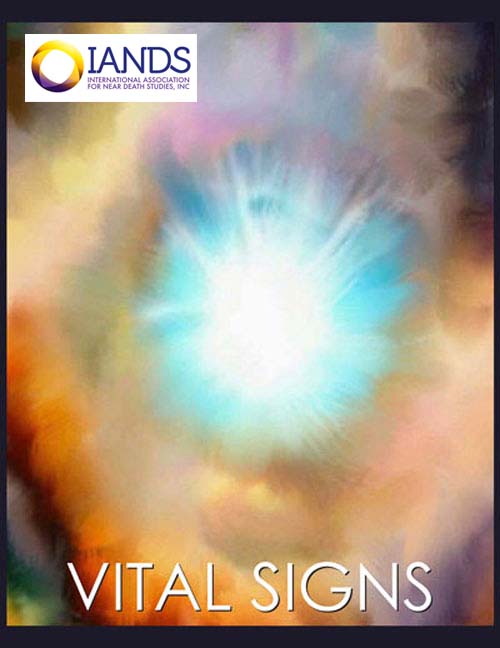 2023 Summer 2023 SummerIssue 42-2 (PDF) |
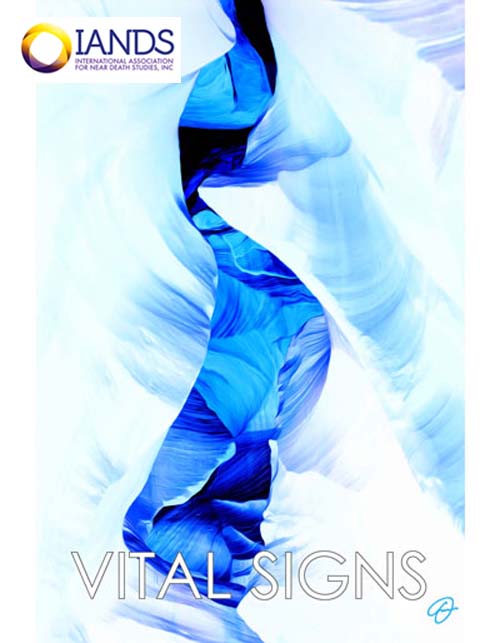 2023 Fall 2023 FallIssue 42-3 (PDF) |
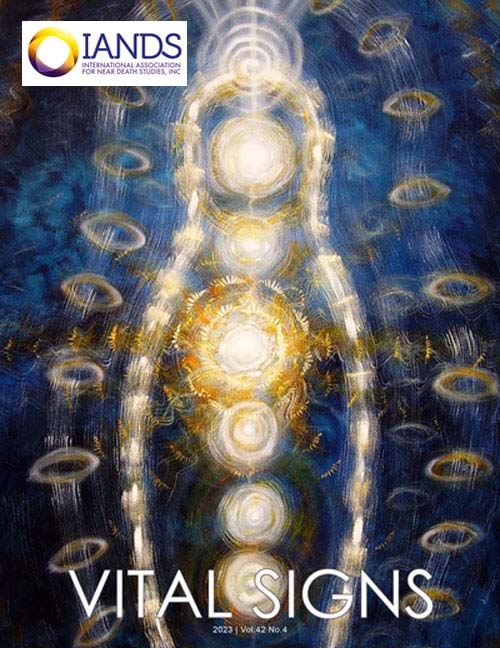 2023 Winter 2023 WinterIssue 42-4 (PDF) |
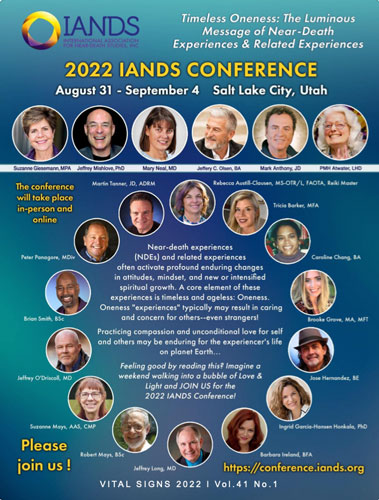 2022 Spring 2022 Spring Issue 41-1 (PDF) |
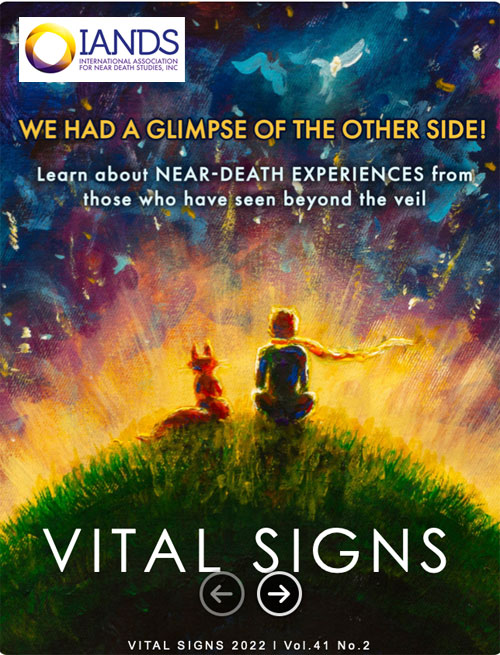 2022 Summer 2022 SummerIssue 41-2 (PDF) |
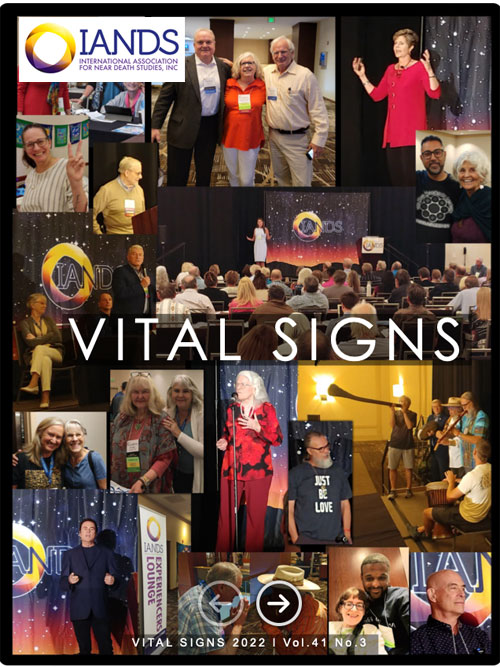 2022 Fall 2022 FallIssue 41-3 (PDF) |
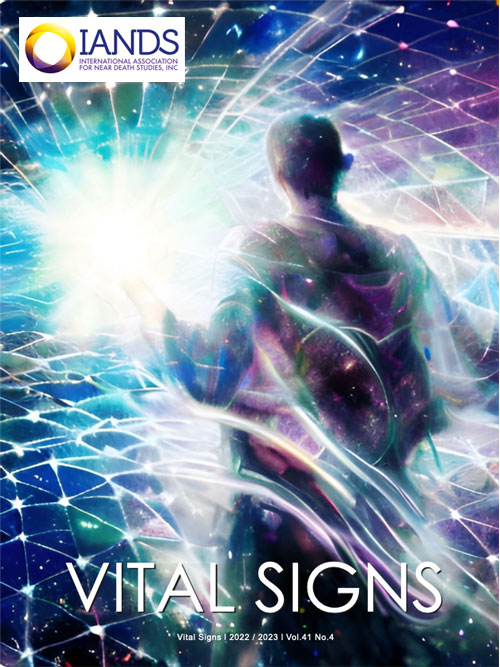 2022 Winter 2022 WinterIssue 41-4 (PDF) |
 2021 Spring 2021 Spring Issue 40-1 (Unavailable) |
 2021 Summer 2021 SummerIssue 40-2 (Unavailable) |
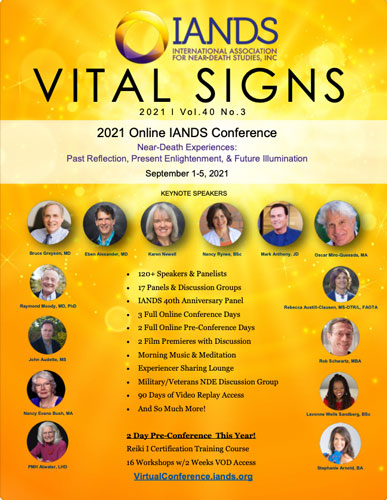 2021 Fall 2021 FallIssue 40-3 (PDF) |
 2021 Winter 2021 WinterIssue 40-4 (PDF) |
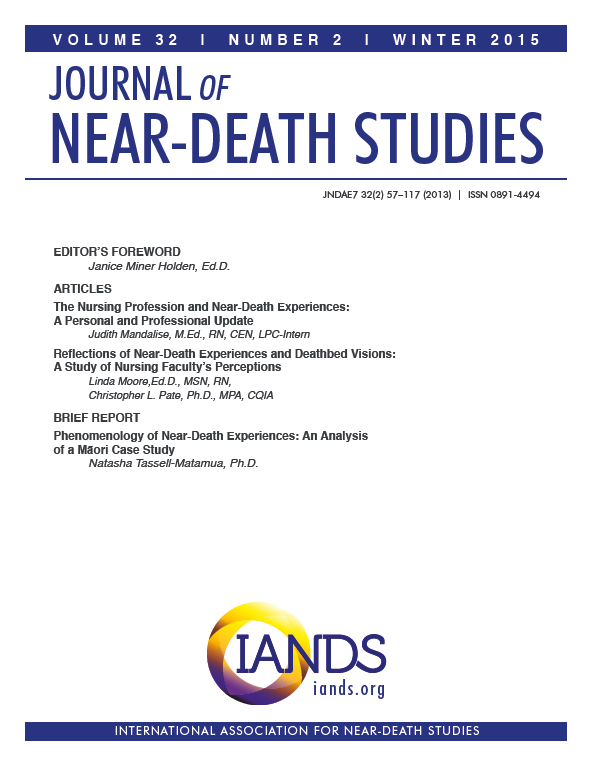 Journal of Near-Death Studies
Journal of Near-Death StudiesThe Journal of Near-Death Studies (JNDS) is the only peer-reviewed scholarly journal (ISSN 0891-4494) dedicated exclusively to the field of near-death studies. It is cross-disciplinary.
For more information, click here.
Instructions to authors for articles.
Instructions to authors for media reviews.
To subscribe: Join IANDS as a Professional member and also receive all of the other benefits of IANDS membership.
All JNDS issues are in-print and available as PDFs:
Table of Contents:
Click on each volume to view the table of contents.
IANDS resources for book publications are limited. If we have time and a proposed book meets these criteria we will consider publishing it. The criteria are that the book must be:
Our annual North American conferences provide current and topical information about NDEs in an informal setting. Near-Death Experiencers, Educators, Care Givers and the general public all find programs and activities of interest in these events.
This section contains a summary of previous IANDS conferences and links to materials from them.
Click here for the details of each conference and the available CDs, DVDs and handouts.
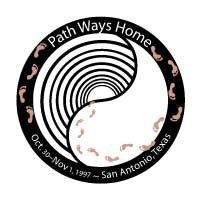
October 30 - November 1, 1997
San Antonio, TX
Conference highlights:
Note: Presentations are listed in the order that they appeared during the conference.
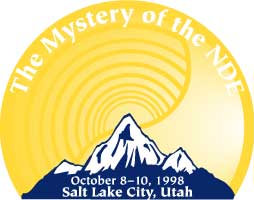
October 8 - 10, 1998
Salt Lake City, UT
Note: Presentations are listed in the order that they appeared during the conference.
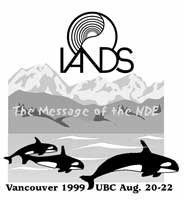
August 20 - 22, 1999
University of British Columbia
Vancouver, BC
Conference highlights:
Note: Presentations are listed in the order that they appeared during the conference.
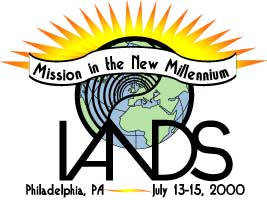
July 13 - 15, 2000
Korman Suites Hotel
Philadelphia, PA
Note: Presentations are listed in the order that they appeared during the conference.
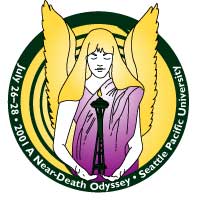
July 26 - 28, 2001
Seattle Pacific University
Seattle, WA
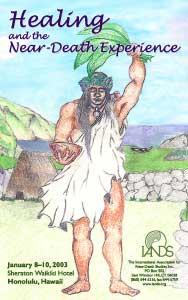
January 8 - 10, 2003
Sheraton Waikiki Hotel
Honolulu, HI
Note: Presentations are listed in the order that they appeared during the conference.
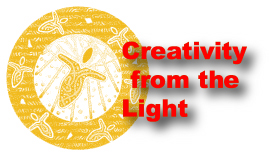
June 24 - 26
Best Western University Plaza
Evanston, IL
Note: Presentations are listed
in the order that they appeared
during the conference.
The 2004 IANDS conference featured Professor Steven Fanning from the University of Illinois describing his life review and its implications for all of us - one of the best descriptions ever of this very powerful experience; British researcher Dr. Peter Fenwick offering an engaging and personal perspective on NDE research to date; and Dr. David Kessler, a leading expert on end-of-life care and collaborator with Elizabeth Kubler Ross until her death - plus presentations on the impact of NDEs on the creative spirit and panels of experiencers describing what happened during their NDEs.

September 8 - 10
Virginia Beach, VA
Note: Presentations are listed in the order that they appeared during the conference.
The 2005 IANDS conference featured fascinating presentations by Dr. Pim Van Lommel (author of the largest prospective NDE study that was published in the prestigious British medical journal The Lancet) talking about NDEs and the continuity of consciousness; Bruce Greyson (editor of the Journal of Near-Death Studies) discussing the NDE aftereffects on the religious and spiritual lives of experiencers; long-time NDE researcher PMH Atwater discussing techniques for experiencers to integrate their NDE into their lives; plus many experiencers describing their NDEs, often with special emphasis on the aftereffects.
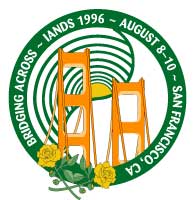
August 8 - 10, 1996
Oakland, CA
Note: Presentations are listed in the order that they appeared during the conference.
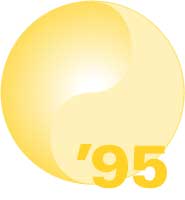
1995
Hartford, CT
Conference highlights:
Note: Presentations are listed in the order that they appeared during the conference.
 2008 North American Conference
2008 North American ConferenceOctober 3-4, 2008
Millennium Hotel
Durham, North Carolina (United States)
A Featured Guest Speaker was Maggie Callanan, RN, always a popular presenter, hospice nurse, best-selling author of Final Gifts, originator of the term nearing-death awareness. Maggie presented on Final Gifts and on her new book, Final Journeys: A Practical Guide for Bringing Care and Comfort at the End of Life. We regret that there are no recordings of Maggie's presentations.
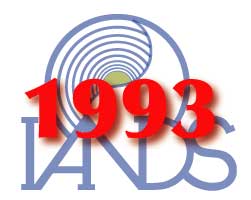
1993
St. Louis, MO
Note: Presentations are listed in the order that they appeared during the conference.

1994
San Antonio, TX
Note: Presentations are listed in the order that they appeared during the conference.
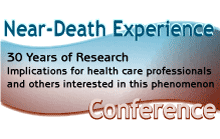 The 2006 IANDS conference was hosted by The University of Texas M. D. Anderson Center in Houston, Texas. The conference reviewed 30 years of research into NDEs, spanning the field of near-death studies that began in 1975 with the book Life after Life by Raymond Moody, MD, PhD. To order DVDs, CDs or audio downloads for the conference presentations, please click on the links below.
The 2006 IANDS conference was hosted by The University of Texas M. D. Anderson Center in Houston, Texas. The conference reviewed 30 years of research into NDEs, spanning the field of near-death studies that began in 1975 with the book Life after Life by Raymond Moody, MD, PhD. To order DVDs, CDs or audio downloads for the conference presentations, please click on the links below.
Segment One - The First Two Days: DVDs are available for the eleven presentations from the first two days of the conference. These DVDs, featuring many of the world's foremost NDE researchers, represent a comprehensive review of all research on NDEs. They are a unique collection that represents the accumulated knowledge that we have about near-death experiences. Each DVD incorporates the visual slides that were used by the presenters. CDs and audio downloads are also available for these presentations.
Segment Two: The Last Two Days: The presentations during the latter two days of the conference, for which only CDs and audio downloads are available, build on the presentations during the first two days. The sessions probe deeper into specific topics through a variety of lectures and panels of experiencers discussing their experiences--most notably childhood NDEs and those resulting from combat or suicide attempts--and the effects of NDEs on marriages.
Pricing is as follows:
DVDs:
First DVD: $25 regular price; $16 for IANDS members ($9 discount on the first DVD)
Second DVD: $18 regular price; $12 for IANDS members ($6 discount per DVD)
Full set of eleven DVDs: $150 regular price; $100 for IANDS members ($50 discount)
Audio Files:
All 25 presentations on one CD in MP3 format: $59.95 regular price, $29.95 for IANDS members ($30 discount)
Individual CDs: $11.95 regular price; $9.95 for IANDS members ($2 discount per CD)
Individual Audio downloads: $9.95
This category is just for testing. Not for live use.
